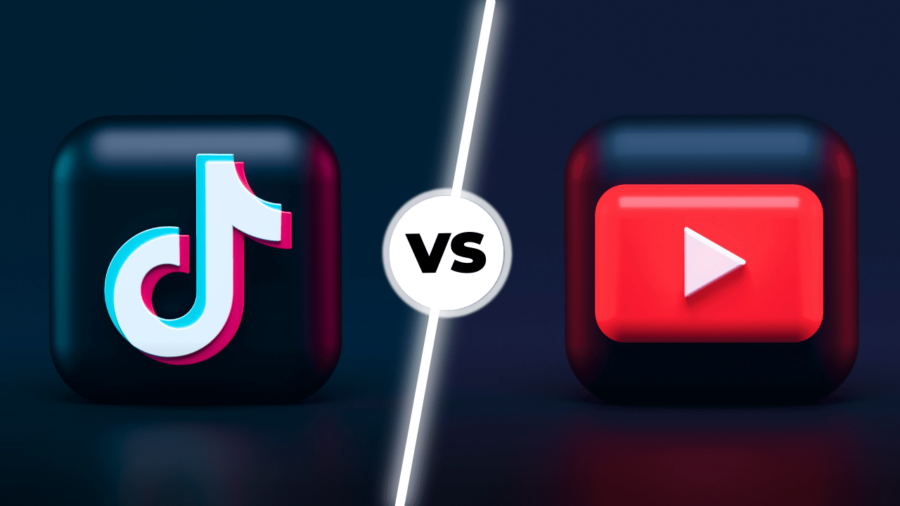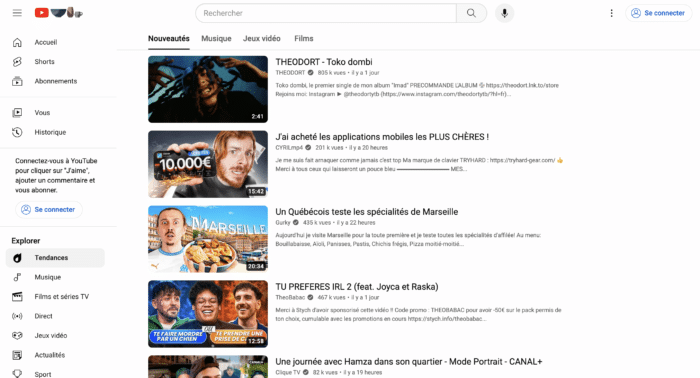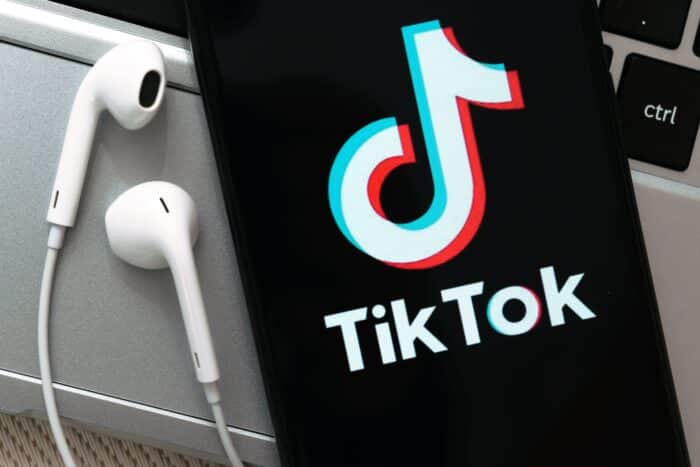
Today, when it comes to internet marketing campaigns, video formats are the weapons of choice. For this, TikTok and YouTube stand out as the preferred places of expression for brands and advertisers. These platforms offer companies and content creators an almost inexhaustible field of possibilities, ranging from viral marketing to engaged communities to targeted advertising. However, each of these platforms has its codes, its limits and above all its audience. Faced with these decisive criteria, which platform should you favor to maximize your reach and impact? In order to determine whether TikTok or YouTube will be your best area of expression to achieve success, let’s start by taking a look at what lies behind each of these video platforms.
TikTok vs YouTube: The Duel of the Video Giants
Two platforms are vying for the throne of online video: TikTok and YouTube. Each with its own loyal user base and unique style. Both offer content formats that have redefined the way we consume video. YouTube is the pillar of long-form content and the web’s go-to video library, rich in diversity and depth. TikTok, also known as the GenZ social network (although that’s no longer the case), has shaken up the digital landscape with its short, vertical, engaging, and viral format. This face-off between tradition and innovation raises a major question for content creators and brands: which platform should you choose to effectively reach and convert your audience? To answer this question, let’s start by taking a quick look at what each video platform offers.
TikTok: A meteoric rise
@khaby.lame You are very hard to make Shaq happy but in the end it all worked out. @ShaqDieselONeal #pepsipartner ? suono original – Khabane blade
Pepsi campaign in collaboration with Khaby Lame, the most followed TikToker in the world TikTok, since its creation in 2016, has quickly established itself as a key player in social networks. As we saw in our previous article Instagram VS TikTok , these two platforms mainly appeal to younger generations, who make up the bulk of their audience (67% of TikTok users are under 24 according to the Data Reportal 2023 report ). In 2023, the platform passed the impressive milestone of 1.7 billion active users while becoming the most downloaded application in the world ahead of Instagram. It is TikTok’s suggestion algorithm that has made it its strength and continues to attract new users every year. According to a recent study, TikTok users spend an average of 80 minutes per day on the application, making it the most used social network on a daily basis. In France, TikTok attracts an average of 34.6 million French visitors each month . From an advertiser’s perspective, TikTok is emerging as a new arena of expression with creative and native ad formats that seamlessly integrate with the platform. TikTok’s impact on consumers is clear. The platform has proven to be a powerful vehicle for discovering new products and trends, with a notable influence on its users’ purchasing decisions. According to TikTok For Business, Mediatool, and Adweek, 49% of users say that TikTok helps them in their consumer choices , demonstrating the effectiveness of ads on the platform. Finally, 72% of users appreciate ads on TikTok , finding them inspiring.
YouTube: A universal platform
YouTube Trending Tab YouTube, founded in 2005 and acquired by Google a year later, has established itself as an essential platform in the digital landscape. With 2.49 billion monthly active users in 2024 (according to the latest We Are Social report ), YouTube is positioned as the second most used social platform in the world, just behind Facebook (which has 3.05 billion monthly users). Internet users spend an average of 28 hours per month on it, an engagement time surpassed only by TikTok. In France, YouTube’s reach is just as impressive, with 41.4 million French people using the platform each month. YouTube’s audience is therefore quite large and allows it to reach an audience of all ages. French users spend an average of 11 hours and 42 minutes per month on YouTube, or around 37 minutes per day, which is still not far from TikTok’s 80 minutes per day. This daily engagement time even reaches 1 hour and 8 minutes for 15-24 year-olds.
TikTok vs YouTube: The Different Video Formats at Your Disposal
The rise of video social platforms has disrupted the digital landscape, giving brands and creators a multitude of formats to express their creativity. TikTok and YouTube stand out for their unique approaches to video, each offering specific formats that cater to different needs and audiences.
Creativity on TikTok
@tuvok12 Was the last one so scared? what would your reaction be?? ? original sound – Tuvok12
With its organic formats , TikTok has revolutionized the way content is created and consumed. The content offered on TikTok is centered on brevity, immediacy, and creativity. Videos on TikTok range in length from a few seconds to 10 minutes. The vertical format with infinite scrolling is ideal for viewing on a smartphone, which promotes an immersive experience. TikTok is particularly known for its challenges, duets, and innovative visual and sound effects.
Variety of formats on YouTube
YouTube, as a pioneer of online video, offers a wide range of formats from short videos to feature-length documentaries. Creators and brands can publish varied content, including tutorials, vlogs, reviews, and much more, without any duration restrictions (the longest reaches the modest length of 571 hours, 1 minute and 41 seconds). Faced with the great diversity of content offered on the red banner platform, determining the right format to communicate is not always easy for brands. To find the best marketing axes and levers, consider the expertise of our Youtube Ads agency , and develop advertising content that will perfectly adapt to your audience and your objectives.
TikTok vs Shorts: Similarities and Distinctions
TikTok and YouTube Shorts, YouTube’s direct competitor to TikTok, have both notable similarities and distinctions in their approaches to vertical video formats:
- Length : TikTok allows videos up to 10 minutes, while YouTube Shorts focuses on content no longer than 60 seconds.
- Sound : Both platforms offer a vast audio library. Note that TikTok is driven by constantly changing music trends.
- Editing : Both TikTok and YouTube Shorts offer built-in editing tools for dynamic creations. TikTok, however, stands out for its wider range of special effects and filters.
- Concept : While TikTok focuses on authenticity and creativity through challenges and viral trends, YouTube Shorts benefits from YouTube’s vast audience, although finding a specific audience for YouTube Shorts remains particularly difficult.
- Visibility : Virality is much more present on TikTok than via Shorts videos, which are often restricted and do not have a large organic reach.
TikTok vs YouTube: The Pros and Cons of Each
Exploring the pros and cons of TikTok and YouTube reveals the unique strengths and challenges of each platform.
The advantages of TikTok:
- Unlimited Creativity : Easy-to-use editing tools and a vast library of music and special effects encourage limitless creativity.
- High Engagement : TikTok’s algorithm favors personalized discovery of content, often resulting in higher user engagement.
- Rapid growth : TikTok’s viral structure allows new creators and brands to quickly gain visibility and popularity.
- Active community : The platform cultivates an engaged and interactive community, open to trends and challenges.
- Affordable price : If you want to get started on TikTok Ads, the platform offers you great visibility with lower costs than some platforms, including cheaper CPMs.
The disadvantages of TikTok:
- Ephemeral content : The fast-paced nature of consumption on TikTok can make content less durable and forgettable, hence the importance of working on your TikTok SEO.
- Content Limitations : Despite the expansion of duration limits, the format remains focused on short videos, which can limit the depth of content even as the photo format begins to gain momentum
- Long term : TikTok can bring huge visibility but it is not always easy to master the codes to break through on TikTok . Long term consistency is the key to success.
The advantages of YouTube:
- Audience Diversity : Thanks to the platform’s algorithm, ads are served to the right audience, ensuring that only the right audiences benefit from the ads served.
- Established Communities : The seniority of certain channels allows brands to benefit from well-defined and receptive audiences.
- Powerful SEO : As the second largest search engine, YouTube offers excellent visibility opportunities through SEO.
The disadvantages of YouTube:
- High Competition : Achieving visibility on YouTube can be difficult due to market saturation and increased competition. The organic algorithm does not work the same way as TikTok and does not allow anyone to gain good visibility.
- Production complexity : Creating high-quality videos for YouTube requires time, advanced skills, and significant resources.
- High cost : Setting up a promotional campaign on YouTube is more expensive than on TikTok, which can be off-putting for smaller brands.
- Still low presence : The platform’s ads are still very focused on horizontal video formats, but not very much on vertical on YouTube Shorts. There is no doubt, however, that this will change greatly in the coming months.
TikTok vs YouTube: What Advertising Opportunities Do They Offer?
TikTok and YouTube each offer unique advertising opportunities that fit different brand objectives and content strategies. On TikTok, brands can leverage TikTok Ads formats like TopView ads, which appear when the app is opened, In Feed Ads, Shopping Ads , and more. These formats leverage TikTok’s viral nature and high engagement to reach a young, dynamic audience. YouTube, meanwhile, allows brands to engage with a broader, more diverse audience through a variety of YouTube Ads formats , including in-stream video ads, which can run before or during videos, display ads that appear alongside video content, and more. YouTube also offers unique targeting and segmentation opportunities, allowing brands to precisely target their audiences.
TikTok vs YouTube: Which one to choose to promote your brand?
Choosing between TikTok and YouTube to promote your brand largely depends on the target demographic, campaign goals, and the type of content the brand wants to produce. TikTok is the ideal social network for brands looking to:
- A young audience, but not only
- Capitalize on creative formats
- To generate organic visibility through viral content
- Quickly engage users with short, dynamic formats
YouTube is suitable for brands that prefer:
- More structured advertising campaigns
- More detailed and informative content
- Building a long-term brand presence
- Engage users with longer, in-depth videos
In conclusion, both platforms offer distinct advantages and can be used in conjunction to maximize the reach and effectiveness of brand campaigns. The question is not which video platform to choose for your advertising campaigns, but how to coordinate them to leverage the unique strengths of each social network. Used well, TikTok and YouTube can create a comprehensive, multi-channel advertising strategy. To successfully navigate these waters and optimize your presence on TikTok and YouTube, contact our TikTok and YouTube Ads agency .








